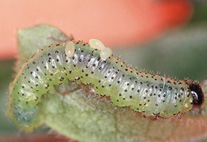Abstract
Francis Day described Pethia punctata from Cochin, on the Malabar (south western) coast of India. Although, the species is now recovered from its synonymy with P. ticto, an accurate diagnosis and description have been lacking. A redescription of P. punctata based on external morphology, osteology and genetics is provided, which revealed that P. muvattupuzhaensis, described from Muvattupuzha River, Ernakulam District, Kerala, India, is its junior synonym. Pethia punctata can be diagnosed from other known species in the genus by a combination of characters including lateral line complete, with 23–25 pored scales; 8 predorsal scales; ½4/1/3½ scales in transverse line; dorsal fin originating almost opposite to, or slightly before pelvic-fin origin; gill rakers 7 on first ceratobranchial; 4+26 total vertebrae; a small black humeral spot covering anterior half of the fourth scale of the row below the lateral-line row; two minute dark spots below the humeral spot; a prominent spot on the caudal peduncle, surrounded by a golden hoop covering scales 19–21 of the lateral-line row; and dorsal fin with 2–3 longitudinal rows of black spots, third row occupying only anterior portion of the fin.

